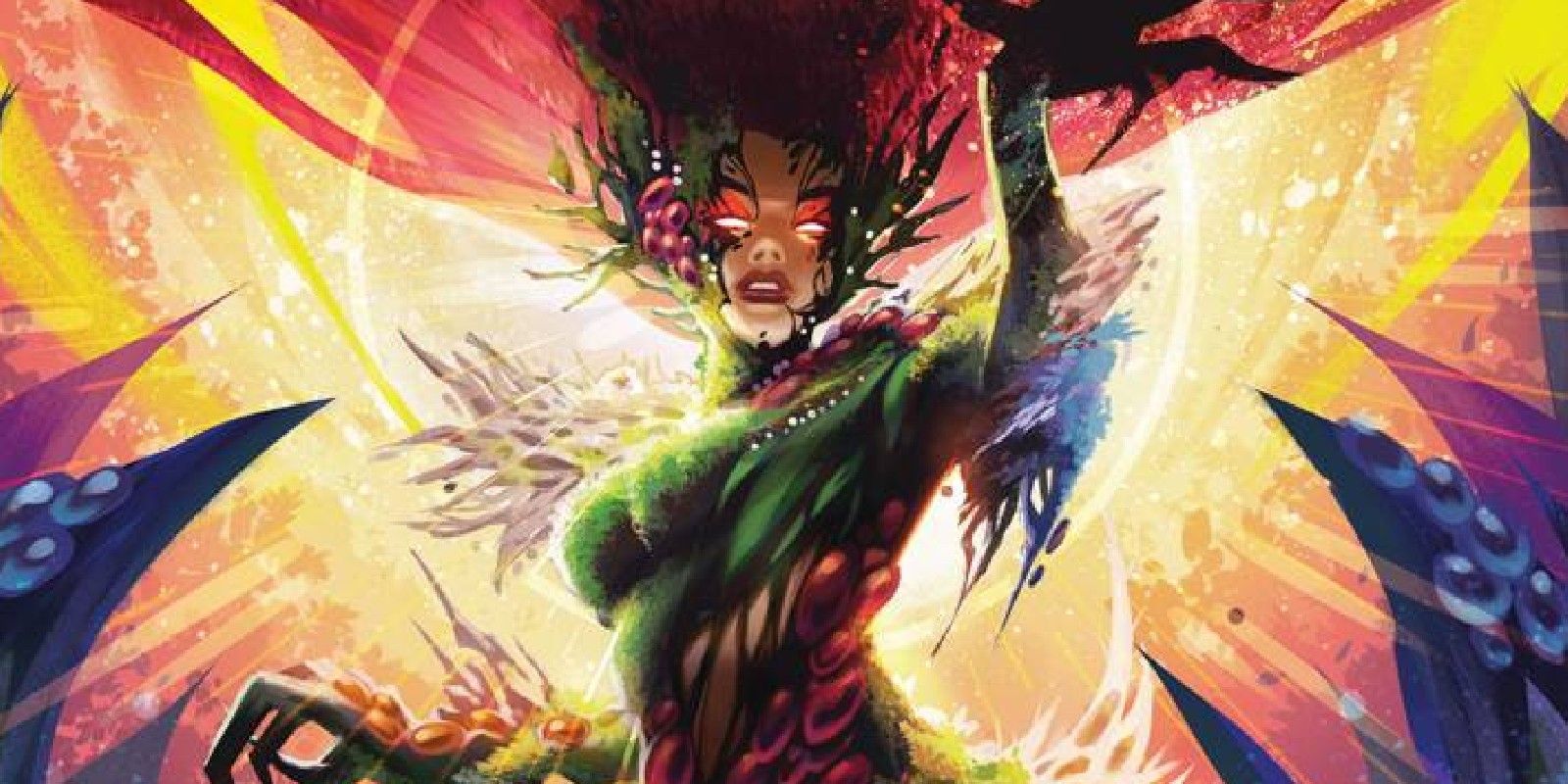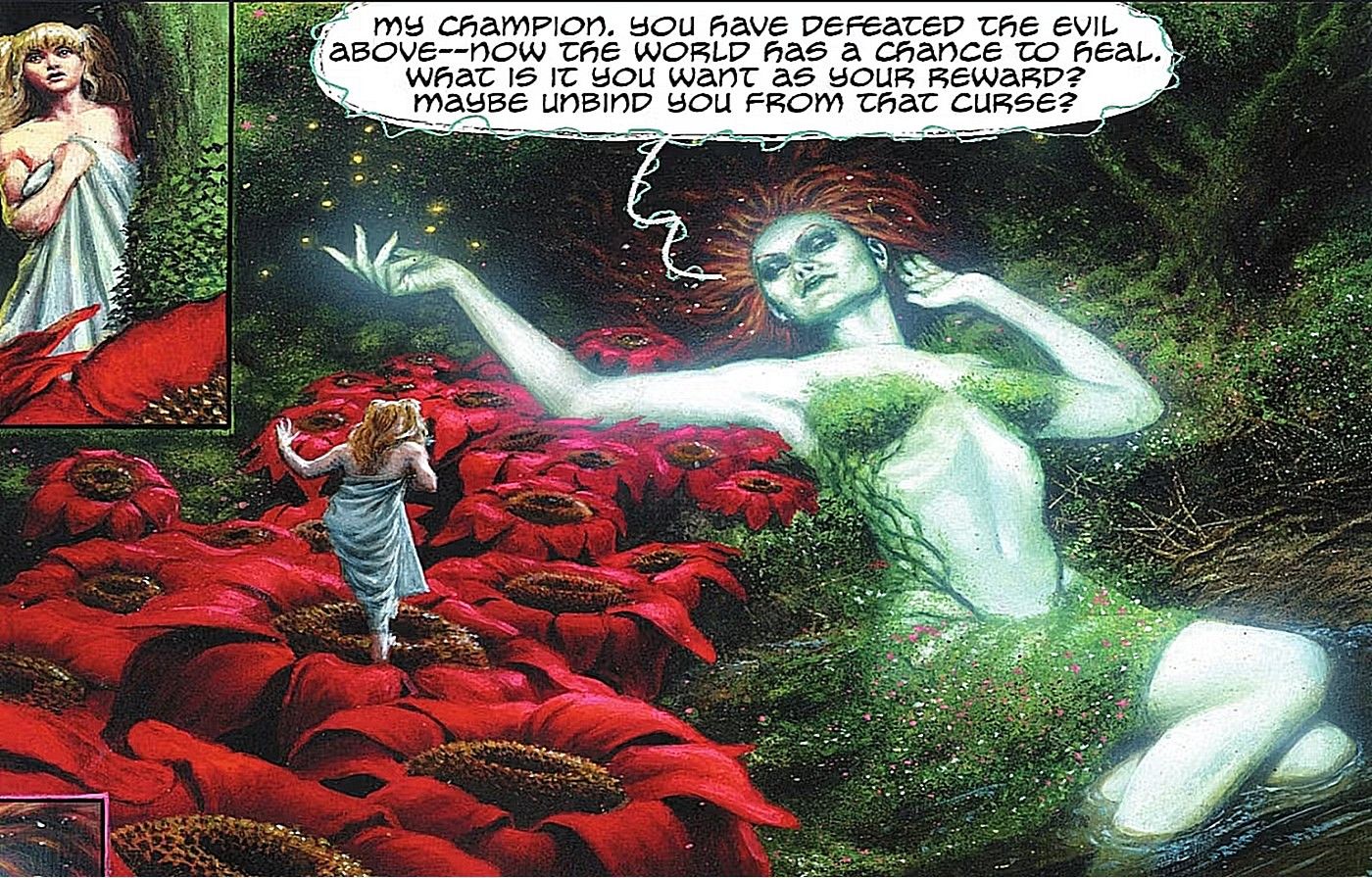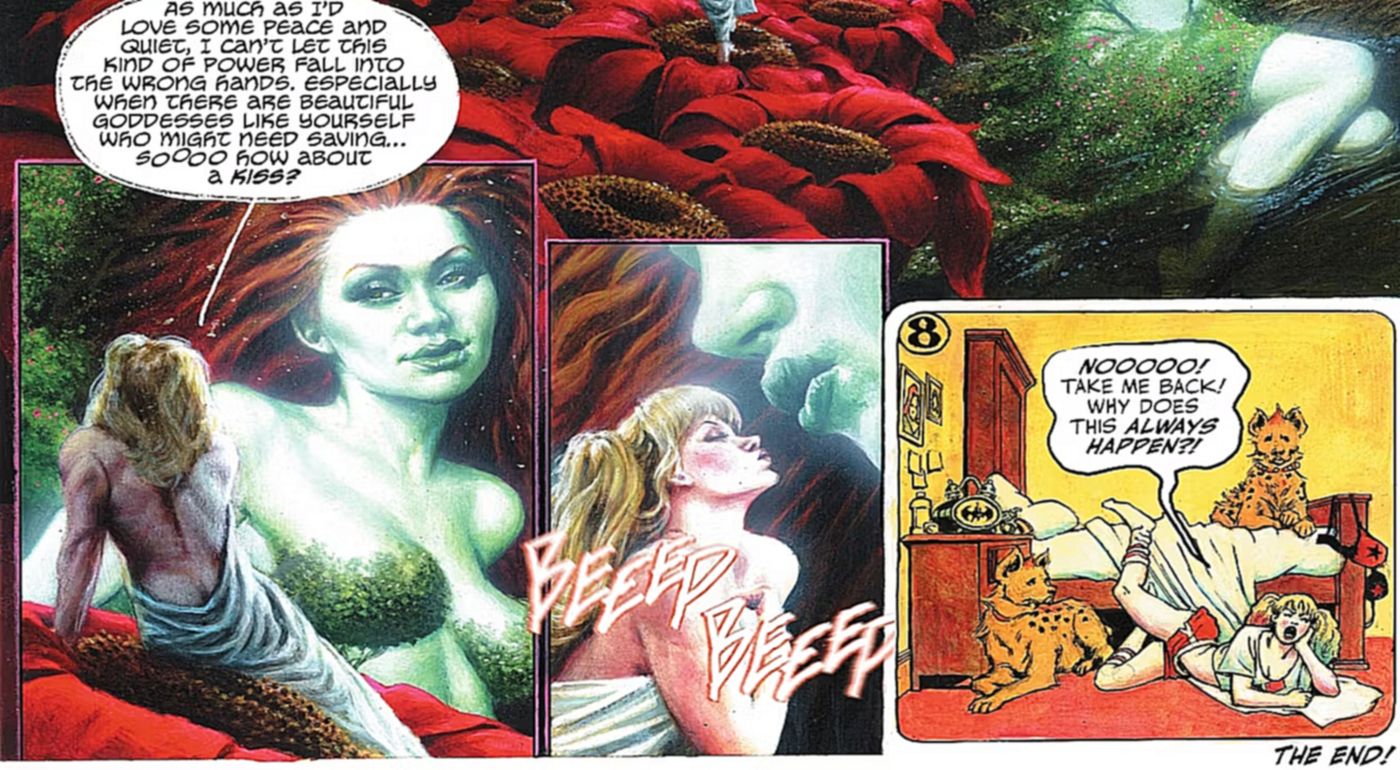Summary
- Harley Quinn #36 features a back-up story, “Harley the Barbarian,” where Harley envisions Poison Ivy as a goddess, hinting at Ivy’s potential for godhood in the DC Universe.
- Poison Ivy’s path to godhood has been hinted at before, and “Harley the Barbarian” beautifully depicts Ivy as a giant, shining deity.
- Poison Ivy’s popularity has grown due to her romantic pairing with Harley Quinn, but more critically, because of how effectively DC has developed her character over the years.
Warning! Contains Spoilers for Harley Quinn #36!In essence, DC’s superheroes have the powers of demi-gods, and as a result, it’s not entirely unusual for characters in the DC Universe to ascend to godhood at one point or another. Hal Jordan once became the Specter, and Wonder Woman became the Goddess of Truth. Now, DC has revealed what Poison Ivy would look like if she achieved her ultimate form as a goddess.
Harley Quinn #36 features the back-up story “Harley the Barbarian” – written Alexis Quasarano, with art by Steve Beach, and lettering by Hassan Otsmane-Elhao – which centers on one of Harley’s characteristically bizarre dreams, where she envisions herself as in a fantasy setting.
The climax of the story involves the goddess Poison Ivy, and it’s a perfect evolution for her. DC has previously teased godhood as Ivy’s final form, and this story provides a glimpse of what it could be like, at least filtered through the lens of Harley Quinn’s feelings for Ivy.
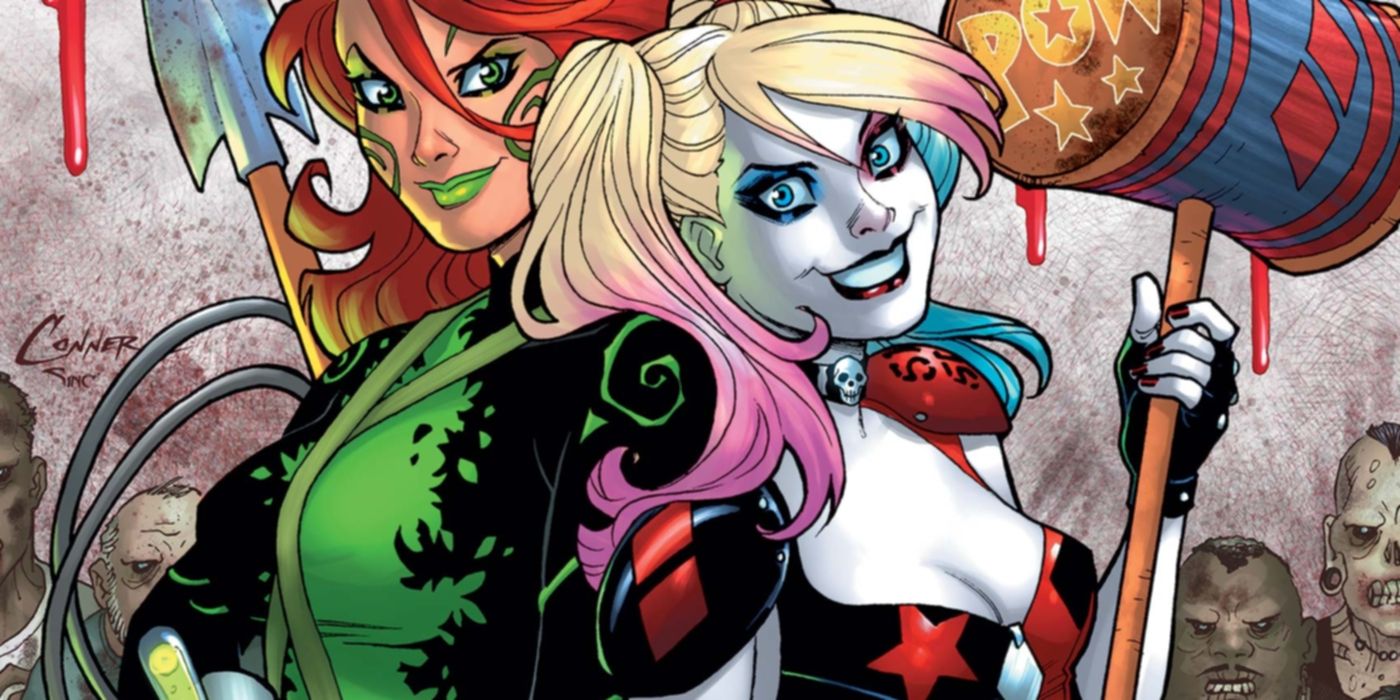

Harley Quinn & Poison Ivy Swap Costumes For Halloween In Official DC Art
In a wickedly playful twist, Harley Quinn and Poison Ivy trade their iconic costumes for a Halloween rendezvous in an official DC art unveiling.
Poison Ivy’s Goddess Form Shines In “Harley The Barbarian”
Harley, at least, views Ivy as a goddess, and in time, the character’s deity-status may very well extend beyond a romantic fantasy, and into a reality the DC Universe as a whole must be prepared to face.
Poison Ivy started out as a regular environmental scientist named Pamela Isley, who wanted to save the world. This led her to allow her professor, a man named Woodrue, to experiment on her, which ultimately gave her powers over plant life; over time, Poison Ivy has been connected to the Green, a powerful natural force in the DC Universe. Poison Ivy’s path to godhood has been hinted at over the years; “Harley the Barbarian” delightfully plays with this idea, depicting Ivy as a giant, shining deity, her glow legitimately radiating off the page in artist Steve Beach’s rendering.
Poison Ivy’s origin story is receiving a contemporary update in the upcoming Poison Ivy #21. The character’s popularity has grown exponentially in recent years, in part as a result of an iconic romantic pairing with Harley Quinn – but more critically, because of how effectively DC has used the characters in recent years, and how her character has organically developed since her inception.
Harley’s Dream Of A Goddess Poison Ivy Could Become A Reality
Poison Ivy wants to save nature from the destructive tendencies of humans. She has dedicated her life to saving natural life from the detrimental forces of industrial society; this has led her on a path of significant growth, as a character, and as a complex part of the DC superhero ecosystem. While DC is currently playing with the idea of Poison Ivy being either a hero or anti-hero, her future as a DC deity would be her natural end point, something “Harley the Barbarian” playfully puts on display, though it ends just before the protagonist can steal a kiss from her goddess.
Harley Quinn #36 is on sale now from DC Comics!
|
Harley Quinn #35 (featuring the story “Harley the Barbarian”) (2024) |
|
|---|---|
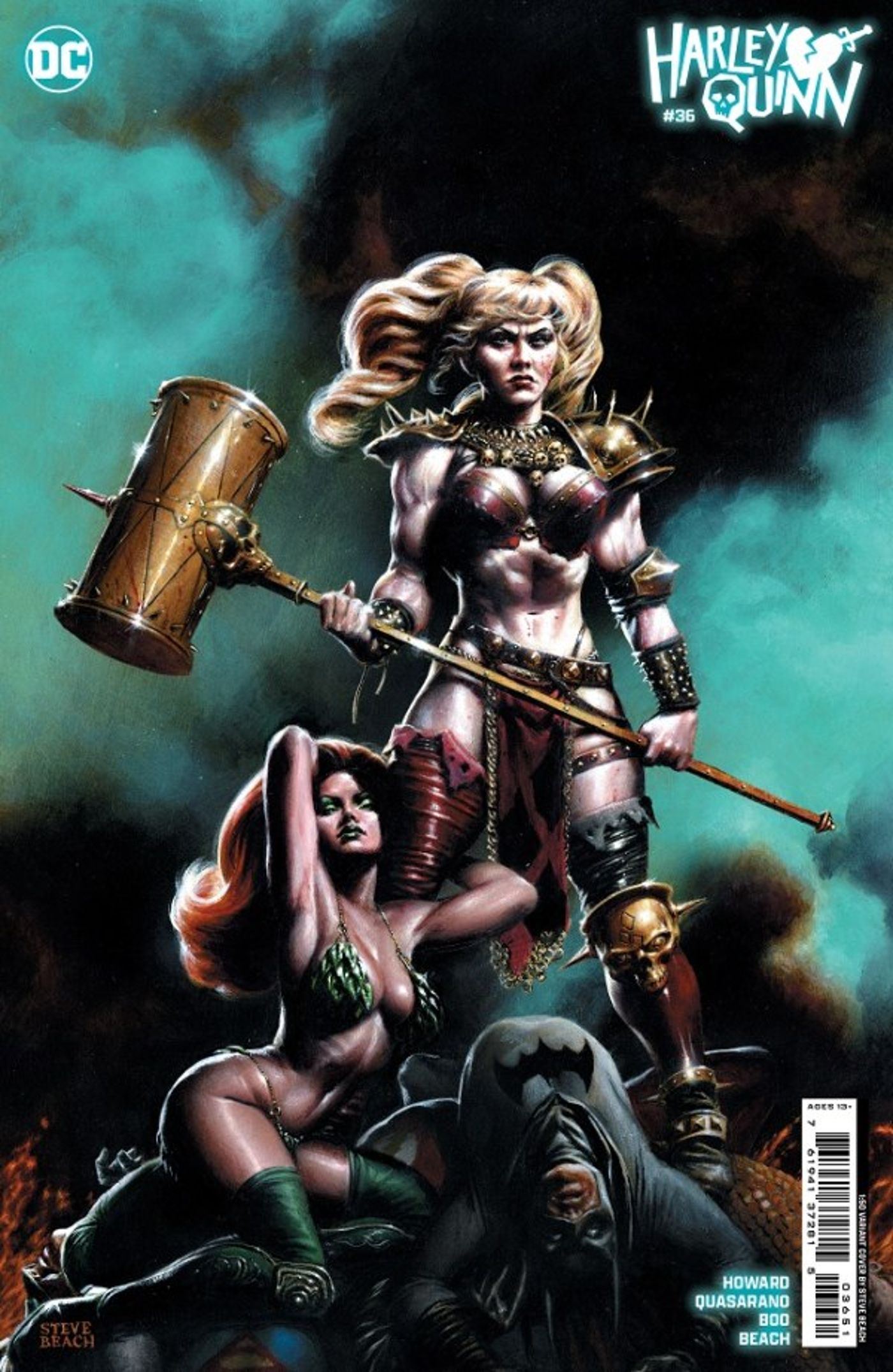  |
|
This story originally appeared on Screenrant

